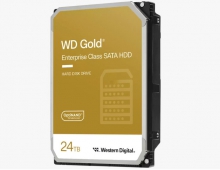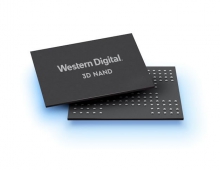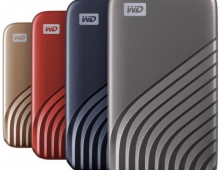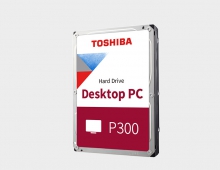
HGST Helium-filled Hard Disk Drives Promise Boost in Capacity
Hitachi GST, a Western Digital company, today announced a new helium-filled hard disk drive (HDD) platform, which is claimed to be at the forefront of advanced technology for increasing capacity and significantly reducing total cost of ownership (TCO) for enterprise and cloud systems.
The new platform enables HGST to go beyond its five-platter design (up to 4TB). With challenges in scaling current areal density technologies, this new platform allows HGST to design seven-platter drives in a standard 3.5-inch form factor that will extend the capacity and cost-per-gigabyte curve for many product generations to come. While HGST did not say what capacity the helium-filled drives will sport, it could be as much as 5.6TB based on the company's estimate of a 40% increase over current technologies.
In addition, the inherent benefits of the platform, including the helium fill, allow HGST to significantly improve datacenter TCO on virtually every level: capacity, power, cooling and storage density. Hard disk drives based on the new platform are expected to be appear next year.
The density of helium is one-seventh that of air, delivering advantages to HGST's sealed-drive platform. The lower density means dramatically less drag force acting on the spinning disk stack so that mechanical power into the motor is substantially reduced. The lower helium density also means that the fluid flow forces buffeting the disks and the arms, which position the heads over the data tracks, are substantially reduced allowing for disks to be placed closer together (i.e., seven disks in the same enclosure) and to place data tracks closer together (i.e., allowing continued scaling in data density). The lower shear forces and more efficient thermal conduction of helium also mean the drive will run cooler and will emit less acoustic noise.
"The benefits of operating a HDD with helium fill have been known for a long time. The breakthrough is in the product and process design, which seals the helium inside the HDD enclosure cost effectively in high-volume manufacturing," said Steve Campbell, chief technology officer at HGST.
The new, helium-filled sealed-drive platform is being demonstrated today at the Western Digital Investor event in Irvine, California. At the event, HGST is comparing the power consumption between a helium-filled drive and an equivalent air-filled drive side-by-side, demonstrating a reduction in power consumption for the helium-filled drive of 23 percent. Taking into account the extra capacity coming from two additional disks, the improvement in watts-per-TB is 45 percent. In addition to consuming less power, the drive operates four degrees Celsius cooler, requiring less cooling in the system rack and data center. This reduction in power and associated cooling cost significantly contributes to the lower TCO of the helium-filled platform. The critical watt-per-TB metric will further improve over time as the helium-filled drive platform enables significantly higher drive capacities in future product generations.
HGST also expects to use helium drives for new, higher capacity drive technologies such as Heat Assisted Magnetic Recording (HAMR) and Shingled Magnetic Recording.
In addition, the inherent benefits of the platform, including the helium fill, allow HGST to significantly improve datacenter TCO on virtually every level: capacity, power, cooling and storage density. Hard disk drives based on the new platform are expected to be appear next year.
The density of helium is one-seventh that of air, delivering advantages to HGST's sealed-drive platform. The lower density means dramatically less drag force acting on the spinning disk stack so that mechanical power into the motor is substantially reduced. The lower helium density also means that the fluid flow forces buffeting the disks and the arms, which position the heads over the data tracks, are substantially reduced allowing for disks to be placed closer together (i.e., seven disks in the same enclosure) and to place data tracks closer together (i.e., allowing continued scaling in data density). The lower shear forces and more efficient thermal conduction of helium also mean the drive will run cooler and will emit less acoustic noise.
"The benefits of operating a HDD with helium fill have been known for a long time. The breakthrough is in the product and process design, which seals the helium inside the HDD enclosure cost effectively in high-volume manufacturing," said Steve Campbell, chief technology officer at HGST.
The new, helium-filled sealed-drive platform is being demonstrated today at the Western Digital Investor event in Irvine, California. At the event, HGST is comparing the power consumption between a helium-filled drive and an equivalent air-filled drive side-by-side, demonstrating a reduction in power consumption for the helium-filled drive of 23 percent. Taking into account the extra capacity coming from two additional disks, the improvement in watts-per-TB is 45 percent. In addition to consuming less power, the drive operates four degrees Celsius cooler, requiring less cooling in the system rack and data center. This reduction in power and associated cooling cost significantly contributes to the lower TCO of the helium-filled platform. The critical watt-per-TB metric will further improve over time as the helium-filled drive platform enables significantly higher drive capacities in future product generations.
HGST also expects to use helium drives for new, higher capacity drive technologies such as Heat Assisted Magnetic Recording (HAMR) and Shingled Magnetic Recording.





















